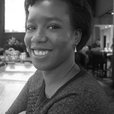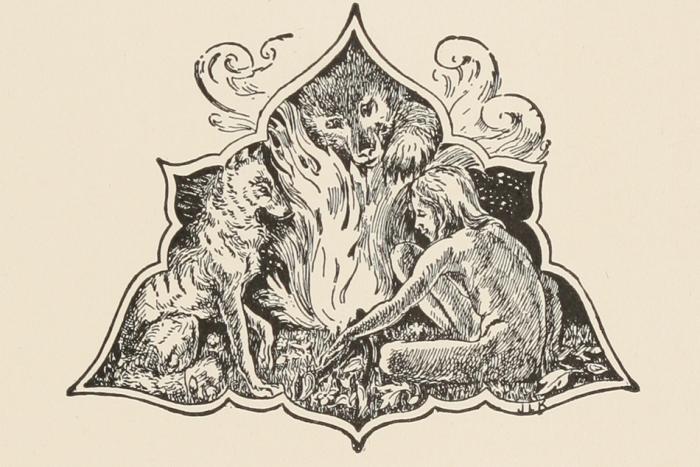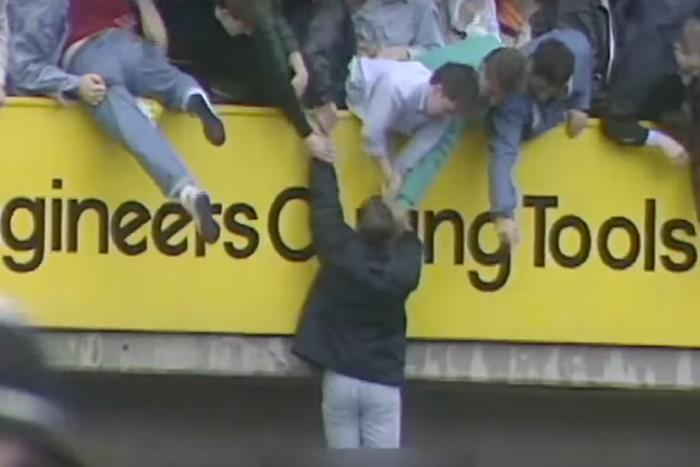Dadaab is the world’s largest refugee camp. Its official population is three hundred thousand, but a population is only as numerous as the people you’re willing to count. Its four complexes—Ifo 1, Ifo 2, Daghaley and Hagadera—sit in the unyielding arid desert of north eastern Kenya. In the forty-five degree heat bakes a legal fiction.
Legal fictions are concepts in law that state facts to be true even if the premise is fantasy. MPs in the British Parliament cannot resign; instead, they ask to be assigned an office that no longer exists. A corporation is a person except when they’re not. Legal fictions are acquired through the peculiarities of legal tradition; a court many decades ago needed a way to interpret the law in the spaces where it had not planned for it. A common legal fiction is a character: the hypothetical reasonable person. The law knows people are only reasonable in theory. “A fair-minded and reasonable observer.” “The reasonable landlord.” “The man on the Clapham omnibus.” (Clearly, the more richly drawn fake reasonable.)
Like many refugee camps, Dadaab is meant to be a temporary place that the Kenyan government, the UN and wealthy nations insist is going away; instead, in its 25 years of existence, it has become a town, a home and an economy for so many. Even in its dysfunctions, it functions. In the lives of the refugees, you find that that the way Dadaab is understood—a camp, a safe space, a generosity, a temporary place—is a fact made true by the telling of fictions. In City of Thorns, author Ben Rawlence immerses the reader in the lives of nine refugees in Dadaab. The book is a compelling close-up of the men and women who live at the mercy of a broken bureaucracy, despite a hostile host, and by the grace of one another.
I spoke with Rawlence in Toronto.
Vicky Mochama: The thing I noticed about the book is that it resembles an oral history. Was that something you did intentionally?
Ben Rawlence: I wanted to make it readable. Whether it’s fiction or whatever—it doesn’t matter —the main thing for me is that the format was a political choice in the sense that I wanted the message to reach as many people as possible. That means it has be accessible, that means the story has to move; so the principles of fiction apply. So there has to be an arc, there has to be structure, there have to be characters that you empathize with, there has to be a plot. Things have to evolve. You can’t just wallow in four pages of political analysis. So I was very conscious that I wanted the book to move and to carry people.
Was it difficult, then, to pull in those more complex bits of political analysis or political history and tie them to people’s narratives?
That was where I spent a lot of time. Trying to weave in the wider points. A lot of it just came naturally because I knew what I was trying to do. I was trying to tell the individual stories and use them as a sounding board to bounce of all of these other bigger pictures. The writing process was actually quite quick. It was probably only about ten months. What took the time was all of the research and gathering the information. I was quite clear about the kind of book I wanted to write and how I wanted it to work so in a way I didn’t struggle too much with that.
You've done a lot of work with Human Rights Watch and as a journalist yourself. Did you know what argument you were setting out to make?
The book doesn’t really make an argument. What the book does is it portrays a situation. Every time you look at the refugee situation, the brain comes up with a question. “What about this? Well, what about the UN? What about resettlement?” And every time, as your brain grapples with the situation facing the refugees, the book shows you why each of those options has closed down. And why for every solution you come up with, there’s an answer in the book why that’s not possible. So it shows you why this is a crisis and it’s a crisis because there are no answers. So it’s not really making an argument but rather outlining the territory.
In outlining that territory, you’ve focussed in on the Somali story. Why that particular group?
They are 95% of the residents of the camp. I chose that camp because: a) I had history there, b) it’s the biggest in the world so already that lends it the significance. The largest population in the camp by far are the Somalis. They are the third biggest displaced population in the world after the Syrians and the Afghans. And then the Iraqis come after that, then you’ve got Eritreans and Sudanese. [Somalis] are a big part of the global refugee picture.
I wanted to talk about the process of how you decided on Dadaab.
I’d been to quite a few different refugee camps. None of them hit me with the force that Dadaab did because of the size. Dadaab is just the scale of it. Kakuma11A refugee camp in northwestern Kenya that's been in operation since 1991. was an option but you have to answer the question “why not Dadaab?” Because Dadaab is the biggest by a long way. So you have to answer the question “why not Dadaab?” and I didn’t have any answers.
I actually wanted to try and do Kakuma or somewhere else because Dadaab is very hard to work because of the security situation, it’ so far away, and it’s very expensive. But I kept coming back to this question: this is the world’s biggest. If you can’t do it here…
This is the one that shows the world’s problem.
How did you find each of the characters?
I knew some people already. I knew some translators and community leaders who I’d worked with before. So I asked them “Do you know anybody who’s got good stories?” I was looking for a spread. I wanted some women, some men, some young, some old. Some who’d come recently and some who were born there. So I had this rough outline of the mix of people I was looking for.
One day I sat down under a tree and people came. I interviewed probably about thirty people all of whom were new arrivals who were living in Ifo 2, which was the new camp. And they all told me their stories. The community leader himself, who I knew before, it turned out his story was incredible. That was Tawane, so I included him. And then his friend was Fish, and he said, "You really need to talk to Fish." At first, Fish was a translator for me but then his own story became compelling.
With the limited access that you had because of the security situation, how did you feel you could authentically convey the daily lives of the people whose stories you were telling?
What the security restriction does is it makes your job harder. It doesn’t mean you can’t do it properly. It just means you have to work hard to get the same information. So I had to go back again and again to spend more time with people. Sometimes I couldn’t experience exactly what they were doing at the same time but I would have to go back, interview them retrospectively and do this forensic interviewing: “How were you feeling?” “What did you see?” “What were you wearing?” “What was it like?” “What did that person say?” Then cross-check their account with somebody else’s account. It just makes the job of the reporter much harder.
Can you give me an example of something like that?
In the middle of the book, there’s an account of all the bombings of when Al-Shabaab started bombing in the camps. I obviously wasn’t there for all of that. I couldn’t be there on a particular day. So I would see people often on the next day. I’d meet people and they’d tell me, “I was here and I saw this and this,” and then I’d interview someone else who also remembers the bomb on that day and they’d say, “I saw this and that.”
That enabled me in the book, then, to show it almost in real-time like a movie camera. You’re seeing this person is here, the bomb goes off then we pick up another character with the actions somewhere else because we see the police moving in that direction. I interviewed that person and he saw the police and ran to here, and here are the later consequences of the people the police beat up. So you get in fact this whole episode of action seen from the perspective of three or four different people but it’s all been put together retrospectively.
In your experience with Dadaab, what do you think the future of the camp is?
I think it’s going to be much the same. I don’t think it’s going anywhere. As long as the macro-political situation doesn’t change, the camp is not going to change. One thing that’s clear from the book is the interplay between the big picture and people’s lives. As long as the big picture stays the same, the day-to-day life is going to stay the same. There’s no peace in Somalia, there’s no change in the attitude of the Kenyan government, there’s no change in the attitudes of the rich nations in terms of resettlement (taking in more numbers). So people are going to stay there living their lives, trying to get along. That’s going to stay the same.
Does that mean they will stay in the path of al-Shabaab for the foreseeable future?
Well, that’s if you think they’re in the path of al-Shabaab at the moment. They’re not going towards al-Shabaab, they’re not going away from them—they’re just stuck. Al-Shabaab passes through the camp because the road from Somalia to Kenya passes through the camp. But the al-Shabaab presence that there is through the border regions is just as much Kenyan Somalis as it is Somali Somalis, if not more Kenyan Somalis.
Because they have a lot to complain about. They’re the ones who are angry with the Kenyan government. Refugees don’t care about the Kenyan government. For them the Kenyan government is nasty to them but they don’t want to antagonize it any further. They want to be left alone. They don’t have a grievance with the Kenyan government. The people who do are mostly Kenyan Somalis who feel marginalized and who feel a sense of injustice. So I don’t think the refugees are in the path of Al-Shabaab at all or at risk of being radicalized.
The people who are at risk of being radicalized are young people in Mandera, Wajir, Garissa, Mombasa, Nairobi. For them, they supposedly live in a democracy but they don’t. There is nothing for them—there are no jobs for them—and all they see is their leaders getting rich, being corrupt, winding communities up against each other. They think that’s a waste of time. For them, they see a puritanical Islam as a solution. And to be honest, if I was in their situation, I might see it like that too. I am disgusted at the Kenyan political system and how do you express that disgust and that frustration? There is no democratic channel for you to try and reform it. You can’t leave the country, you can’t become a citizen. Personally, you need to find a way of living and to find a set of values to live by. And that’s what the radical choice is. It’s a puritanical one, in the sense that the Founding Fathers were Puritans and didn’t like the hedonism of the Catholic Church with all the corruption and abuses. They wanted to live a simple life. It’s the same kind of mindset.
The Kenyan government then contributes to the fiction: the refugees are terrorists in their fiction.
Absolutely. It’s not true. And all of this foreign policy and all of this money is based on that lie. It’s a myth. There’s some evidence that al-Shabaab passed through the camp on some occasions. The camp is not a hotbed of extremism. The camp is a hostile place for al-Shabaab.
With the book, did you set out to pull out the myths or convenient narratives that aren’t quite so true about the refugee camps?
Yes, the prologue in the White House is me trying to explain to the National Security Council that this is not a hotbed of extremism and they don’t get it. And if they do get it, they then think, “Well, that’s okay. We don’t need to worry about the camp.” Their only concern is with these people who are either terrorists or at risk of becoming terrorists which is stupid and short-sighted but that’s how they are.
I wanted to do more than that, though; I didn’t just want to pull apart myths. I wanted to show this place. The myth is one aspect of this place. It’s one way in which people see it. Inevitably when you get to know it in its detail you see that myth for the nonsense that it is. There’s nobody in that book who is concerned about terrorism—the bombs they don’t like—because they’ve got no relationship to it. They [al-Shabaab] play no role in their lives.
The idea of Dadaab, of making it real as opposed to a myth; in one line you write, “It has acquired the weight and drama of place.” How has it done that?
Just through time. It has existed all this time. People have travelled the roads again and again. You’ve had generations going through the gates of the primary school. It has become a place that is important in people’s lives. They have memories of it and nostalgia for it. When kids get resettled, they’re posting on Facebook: “Oh I miss Ifo Primary school,” “I miss all my friends, my Hagaderians” (Hagadera is one of the camps). It becomes a place imbued with significance just because bodies have passed through it.
What is the effect of that? Of the people who have left and are now sharing their lives on the people who are still in the camp?
It’s really poignant. It’s really tough. You’ve seen Tawane’s story in the book. He has this terrible jealousy of his friends who are in Europe or America. It causes him depression; he’s in bed for a week. He can’t get up. He’s annoyed and frustrated. “What have I done wrong? Why me? Why am I the one that’s left here?” It’s ruinous.
There’s a quote that I quite like. It says it takes four generations to heal a single act of violence. With the Dadaab refugee camp, even if all the refugees get to go where they want to, how long until they’re able to move past this moment in their lives?
For this generation and for the next and probably the next, it will always be there. These guys who’ve grown up in the camp have not experienced war in Somalia but they have inherited the trauma of their parents who’ve told them these stories over and over again. No doubt their children who just being born now in the camp are going to ask, why are we living here and why can’t we leave? That trauma is going to be directly communicated to the next generation.
And even if those children are still having children in the camp in twenty years time, the same story is still going to continue. For those generations still living in the camp, it doesn’t get diluted. I think it retains its force over and over. You're definitely seeing that in Gaza.
The injustice that is the principle grievance of extremism takes a long time to grow, and probably it takes generations. I was always shocked that people in Dadaab are not more radicalized because of the incredible conditions that they’re living under. Possibly in another generation or two, they will get that way because they’ll have to find ways of explaining their situation, and the endurance of it, and the lack of hope. At the moment, there’s still this idea that somehow, somewhere, there might be a future for me. But in another generation or two, that will have gone.






